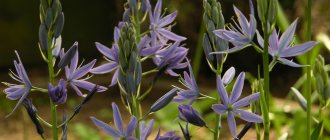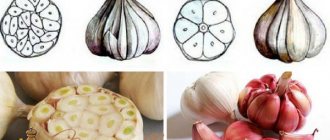Daffodils are beautiful flowers with delicate colors and a pleasant aroma. They are unpretentious in care, which makes them common in all garden areas. Growing daffodils does not require much effort or effort. Daffodils get along well with garden flowers in the neighborhood and can feel quite comfortable in one place for more than three years. However, after that, the bulbs begin to grow and compete for a place “under the sun”, and they stop producing large, high-quality buds. Therefore, flower growers recommend planting flowers, if not every year, then once every four years.
Choosing a place to plant daffodils
Daffodils, thanks to their beauty and delicate coloring, are in demand not only in the beds and flower beds of gardeners, but also in
design of interiors, landscapes, hanging flower beds, lawns. Daffodils get along well in flower beds with other bulbous cultivated flowers. In order for daffodils to bloom well and please the eye, for planting them it is necessary to select an area that is sufficiently lit, windless and well-drained. Daffodils do not like the scorching sun, it can destroy a delicate flower, take this into account when planting and choose places with variable shade.
Preparing the soil for daffodils
Light soils with good aeration are considered the best for planting daffodils.
Loam and sandy loam soil are also suitable. However, if you see that the soil in the area is heavy, enrich it with peat, add half a bucket of sand per square meter, dig it up, and then level it. Additional enrichment of the soil with a mineral complex will have a great effect on plant growth. Do not be upset if your soil does not meet the stated requirements, it can be artificially made suitable. Add sand and peat to clay soils, enrich sandstones with chernozem and fertilizer, and move chernozem with crushed straw and river sand in a 2:1 ratio. Too acidic soil can be limed by adding lime or wood ash. It is very convenient to grow daffodils in high beds; to do this, prepare soil consisting of black soil, peat, river sand, add rotted manure to the mixture (precisely well-rotted manure, aged for about five years, because fresh humus can burn the root system of the bulb) . Form high beds from the resulting mixture, or pour the prepared soil into specially prepared ground pallets made of boards. Apply mineral fertilizer: potassium, phosphorus, a tablespoon per square meter of soil, mix, level.
It is better to plant bulbs from August to October; you must calculate the exact time of planting yourself, as it will depend on your climatic latitude. It takes a narcissus a month to take root well, so this also needs to be taken into account when planting the bulb. The root system of the flower should be fairly well established in the soil before the onset of frost.
How to properly prepare narcissus bulbs for planting in open ground
In order for the bulb to develop well and produce healthy children in the future, you need to follow some simple rules. For planting, we select medium-sized bulbs, about 6 centimeters, of regular shape, weighty and not affected by pests. It is best to transfer the selected daffodil bulbs into a separate fabric bag filled with perlite, so the bulbs are stored until planting. Before planting, it is recommended to treat narcissus bulbs with a fungicidal preparation.
Planting daffodils correctly
To properly approach planting flowers, you first need to determine the type of soil on your site and take into account the size of the bulbs themselves. The bulbs are planted to a depth of 13 centimeters (heavy soils, warm climates) to (26 centimeters, light soils, cold climates). Plant the bulbs in such a way that freezing of the soil does not affect them, and groundwater does not wash away the root system. Therefore, it is so important to take into account all the positive and negative factors in a complex when planting. Leave a distance between rows of about half a meter for convenience when caring for plantings. To get large children, daffodils are planted at a closer distance to each other and less deeply embedded in the ground.
To prevent your flowers from freezing, the soil after planting can be mulched using peat mixed with humus and straw. And when the first frosts arrive, the flowerbed with the plantings can be additionally covered with straw or dry grass, but in early spring, the mulch is removed so that the plant can begin to grow without obstacles.
The ideal time to dig up daffodils is after flowering.
An experienced gardener determines the time to transplant a daffodil by flowers. If the flowers are no longer so large, then it’s time to replant the bush. Digging should be done in dry, sunny weather. Step-by-step process on how to do everything right:
- The bush is removed from the ground and cleaned.
- The planting material is inspected and damaged ones are separated.
- Next, you need to divide the colony of bulbs, select whole ones and put them to dry.
So when should you dig up your daffodil bulbs? Simple daffodils grow in one place for 5-7 years. Before this time, you should not disturb the plant. Hybrid varieties that are distinguished by double large flowers and unusual color (Ice King, Dinky, Androels, Athol Palace, Christmas Valley, Berkeley Court) require a high agricultural background for cultivation, so it is recommended to plant them every year.
Caring for daffodils grown in open ground
Irrigation rates and soil aeration
In early spring, if the winter has had little snow, daffodils will require regular and abundant watering. As soon as the plant begins to grow intensively, watering does not stop, but also loosens the soil, for better absorption of moisture by the flower and to prevent the formation of an earth crust. The main rule when watering should be that after flowering ends, the plant also needs an increased supply of moisture for the normal process of bulb propagation. Do not forget to weed the weeds between the rows, because a weed is not a companion to a cultivated plant.
Apply fertilizers according to the growing season
When the first signs of growth of daffodils appear, you can begin to fertilize with complex specialized fertilizers, following the instructions. Subsequent saturation of the soil must be carried out during budding; for this, a solution of superphosphate is used, with the addition of potassium and urea per tablespoon per bucket of water. The next feeding is carried out after the end of flowering, for the full formation of new plant bulbs. Root feeding is applied with a phosphorus-potassium solution, or with ready-made liquid fertilizers, but you can also apply granular fertilizers, which, when watered, will themselves enrich the soil. Choose any method of fertilization, the main thing is to fertilize on time.
Self-propagation of daffodils
Propagation of daffodils by seeds
Daffodils are bulbous plants that reproduce in several ways, the main ones being vegetative and seed. The latter method is actively used by breeders to obtain new plant varieties. To do this, bulbs of different varieties are subjected to artificial pollination at the time of flowering to obtain a new hybrid. Seeds obtained in this way are sown in specially prepared containers and placed in a room with a temperature of at least 20 degrees; gradually, after two weeks, the temperature is reduced to 15 degrees. The bulb from seedlings begins to develop only in the second or third year of life, so the process of propagation by seeds is very labor-intensive and long.
Vegetative method of propagation of daffodils
This method of propagation is quite often used by gardeners, since with minimal labor costs, by the second year the mother bulb will produce full-fledged children, ready for planting in open ground and independent existence. Depending on the variety, one bulb can produce up to four children, which will be ready for separation in the second or third year. To artificially force the bulb to begin dividing, it is dug up and cut not too deeply, and stored in a cool room with good ventilation. After two or three months, the bulb will produce new children, and it can be planted in the ground with them, and in the second year, separate the new bulbs and plant them on their own.
Reproduction using paired scales
This type of propagation involves selecting large bulbs, drying them, then cleaning them from scales and roots. Afterwards, use a knife to divide the onion into six or eight parts, soak it in a fungicidal solution, and dry it. Select paired scales and pack them in a bag with perlite and maintain the incubation temperature at +21 degrees. Within four months, if the operation to divide the scales was carried out correctly, the formation of new baby bulbs will begin. In the fall, when the formation of young bulbs is completed, they can be separated from the scales and planted in pots, and when the bulbs grow larger, they can be planted in open ground.
Do I need to plant daffodils?
When your daffodils begin to grow, and this time begins approximately in the third year of their constant presence in the same place. They need to be planted, and this is done so that the buds do not become smaller and the daffodils do not get sick. It is better to replant daffodils after flowering has ended, in summer or autumn, at least once every five years. When transplanting, bulb diseases can be detected at an early stage and prevented.
To plant daffodils without damaging the bulbs, you should carefully dig up the flowers along with the soil, and then divide the bulbs and plant them in new holes. It is better to dispose of sick and weak plants; you will not get lush flowering from them.
In the new place chosen for planting daffodils, dig holes, prepare in advance a soil mixture of old rotted manure, peat and sand mixed with ash and superphosphate in small quantities. Place the flower with soil in the hole and sprinkle with the prepared mixture, lightly tamping the planted plant. After planting, water the daffodils generously and feed them with liquid fertilizer.
Daffodils and site design
Narcissus is the first spring flower; it fades quickly, so the compositional solution should focus on its delicacy and contrast with its surroundings.
You can plant daffodils, beautifully combining them with bright red tulips, crocuses, purple hyacinths, and complement the composition with a decorative fence, a border made of cobblestones, and stones.
Mixborders along with daffodils will be decorated with petunia, hosta, salvia, and primroses planted against the background of perennial shrubs will emphasize their young bright greenery. In turn, young succulent foliage focuses attention on the bright yellow-white color of the flowers.
Disembarkation methods:
- in rows - leave a distance of 15 cm between the bulbs, 20-25 cm between the rows;
- square-nested - according to the pattern 15x15 cm for low varieties, 20x20 cm - for high ones;
- compact - plant several bulbs in holes.
Digging up daffodils for storage
At the end of flowering, the gardener is faced with the question of digging up the bulbs for storage and replanting, or preserving them in the ground. Experienced gardeners say that capricious varieties of daffodils do not tolerate being disturbed more than once every three years. The plants begin to get sick and refuse to bloom. However, what to do with those varieties that grow too quickly? Or those varieties that do not give the desired reproduction result and are susceptible to frequent diseases? This is why daffodil bulbs are harvested. Digging them up, drying them and treating them with fungicidal preparations will completely cope with dangerous diseases. And manipulations aimed at stimulating reproduction performed on the bulb during storage will force it to produce children.
So, digging is done after flowering ends, when the above-ground part of the plant dries out. Clean the dug up bulbs from the soil, dry them in a well-ventilated area, without exposing them to sunlight, sort and separate the children. Antiparasitic and fungicidal treatment is mandatory. Then the bulbs are dried again and stored in a darkened room at a temperature not exceeding 17 degrees, until the next time they are planted in open ground.
If you do not intend to dig up the daffodils and decide to leave them in the soil, provide them with water. Remove dried stems and leaves. Organize weeding and provide aeration to the plants, apply fertilizing, because after flowering, the bulb will begin to form children. There should be no weeds in your flowerbed; their root system can harm the formation of children. For the winter, cover the flowers with a 15 cm layer of mulch.
Basic mistakes
Below are the most common mistakes associated with planting and growing daffodils; familiarizing yourself with them will help prevent their recurrence in the future:
- Violation of deadlines not only for planting, but also for digging up bulbs. The dangers of planting too early or, conversely, too late have already been mentioned in the article. At the same time, digging up tubers while the plant still has green foliage is another rather serious mistake, since at this time the process associated with the accumulation of nutrients in the bulbs is actively underway. It is allowed to dig them out of the ground only after all the leaves have turned yellow.
- At no stage should the bulbs be exposed to direct sunlight for long periods of time. Daffodil tubers already have a tendency to dangerously dry out, and the situation described can lead to burns.
- Planting bulbs in spring without pre-cooling. Keeping planting material in a refrigerator or other cool place is not only a recommendation, but a mandatory requirement, since if it is not followed, the plant will grow weak and be susceptible to various diseases.
How to properly remove daffodils
The method for achieving optimal early flowering of daffodils is called forcing. This technology will allow you to receive flowers by a certain date. Forcing is easiest to do in greenhouses, since temperature and humidity are important in this process. However, there are examples of successful forcing in pots.
To prepare the plant for forcing, it is necessary to prevent the plant from blooming; to do this, the flower stalks are cut off in the early stages. This is done so that the bulb accumulates enough strength before forcing. Since the forcing technology itself will be stressful for the plant, because forcing will stimulate not only the flowering processes, but also accelerate the growing season until new children are formed.
One of the ways to force daffodils is to prepare the bulbs. It is necessary to select healthy large bulbs and dry them for two weeks at high temperature (+28 - 30 degrees). Then the temperature is gradually reduced to 17 degrees, the humidity is raised to 90%, and then placed in the refrigerator. It should be remembered that the bulbs cannot be frozen; the optimal temperature is considered to be no lower than +8 degrees.
Daffodils are planted no earlier than a month before the expected flowering time. Bulbs are planted either in a greenhouse or in pots with prepared soil. In a greenhouse, planting bulbs is done as usual, the main thing is not to bury the plant too deep; it is considered optimal when, when planting for forcing, the top of the bulb rises above the ground. The temperature during forcing for the first week should not exceed + 10 degrees, and the subsequent increase to 18 degrees should occur gradually. In such conditions, the plant is kept until flowering. Caring for daffodils during forcing is no different from those growing in open ground. The main thing is not to expose the plant to high temperatures, otherwise the bud will become smaller, and the active development of leaves will begin to inhibit the peduncle. Another trick is to lower the temperature by three to four degrees during flowering, this will prolong the life of the flower.
Another way to drive out daffodils. This method differs little from the usual planting of daffodils; they are not stored in special conditions or subjected to refrigeration. Two months before the desired flowering, the bulbs are planted in prepared boxes filled with sand and placed in a dark basement with high humidity. Under such conditions, the bulb will become active and sprout. After germination, the boxes are moved to another well-lit room with a temperature no higher than 17 degrees. And in a few weeks, you will be delighted with flowers. The main thing is not to forget about regular watering and fertilizing, otherwise the bulb will become depleted. If you want daffodils to bloom for a long time, keep the temperature at the same level, not exceeding +11 degrees.
Description of spring flowers
Narcissus belongs to the amaryllis family and is a perennial plant characterized by amazing resistance to frost, disease and other unfavorable conditions.
In addition, the flower is undemanding to the composition of the soil, habitat, humidity, and lighting. It can grow anywhere. Narcissus is distinguished by its flowering in early spring and its aroma, which is reminiscent of honey. The buds most often have a white or yellow tint. The length of the peduncles ranges from 25 to 40 cm. The leaves are narrow, erect and elongated.
There are many types and varieties of narcissus. Moreover, they differ not only in appearance, but also in the flowering period. Therefore, when choosing a crop, you should carefully study the packaging. On average, narcissus blooms for 10-14 days. If you approach planting and flowerbed design correctly, you can observe different varieties blooming from the last days of March until the end of spring.
Growing daffodils in a pot
Daffodils can be grown not only in open ground, but also in pots, but also on your windowsill. To do this, you need to select plant bulbs that have proven themselves well. It is better to choose late-flowering varieties, as they will grow faster at room temperature. The bulb should be weighty and healthy.
For planting, prepare a pot or other suitable container, which is filled to half with soil, then the bulb is placed so that the top shows one third of the soil. Then the soil needs to be lightly compacted and watered. Then the containers with the planted bulbs are placed in a cool place or buried in the ground until sprouts appear. When the plant begins to sprout, the pots are brought into a well-lit room, avoiding direct sunlight on the flowers. The formation of a bud should be accompanied by an increase in temperature to +16 degrees.
Don’t forget about caring for your plants. Water the daffodils regularly and feed them. When the daffodil grows, you should also take care of the stability of the pot. Thus, you can observe the flowering of daffodils on your own windowsill. After the flowers have faded, trim off the wilted leaves and continue watering so that the bulb can complete its vegetative cycle by producing babies. Afterwards, the bulb is dug up, dried, and another one must be chosen in its place so that flowering occurs annually. Because last year’s bulb is not suitable for re-forcing daffodils, but in open ground. It is capable of flowering and its normal growing season.
When to dig up daffodils after flowering
As soon as spring warmth sets in, daffodils bloom in the gardens, bright yellow, dazzling white with a yellow center. Narcissus belongs to the Amaryllidaceae family, which has almost 60 species. Gardeners in Europe, China, and Japan cultivate only 20 species. For many peoples, the fragile yellow flower is considered a talisman: legends were made about it, holidays were held in its honor, and rituals were held.
Narcissus (Narcissus) is a perennial plant that reproduces by bulb. When should a gardener dig up tulips and daffodils after flowering? This will be discussed later in the article.











